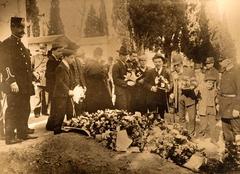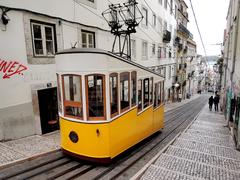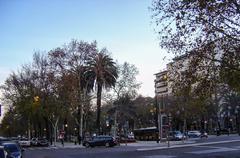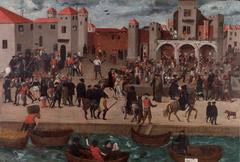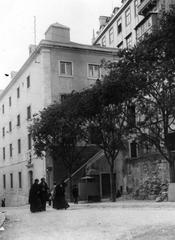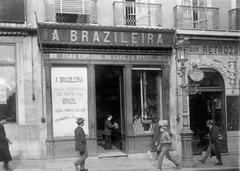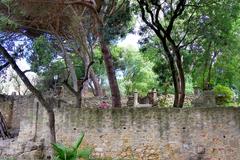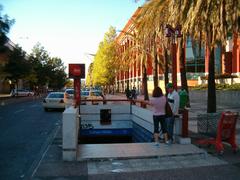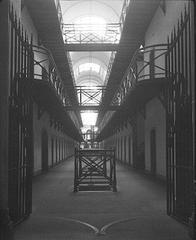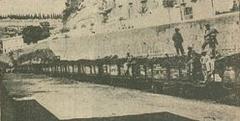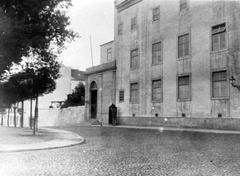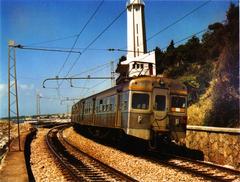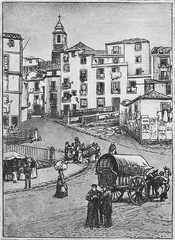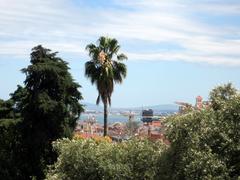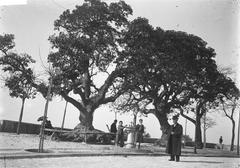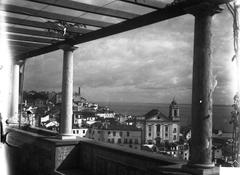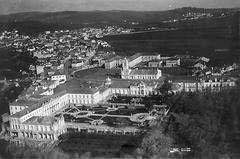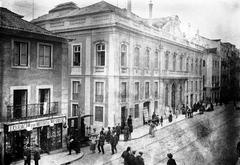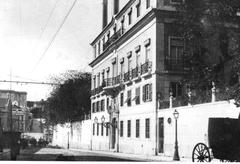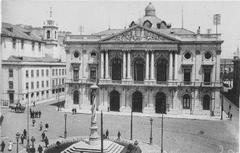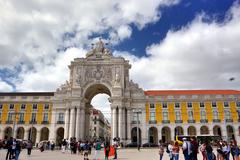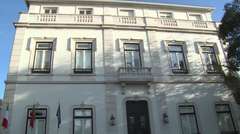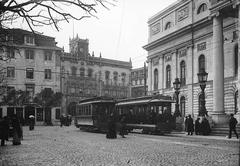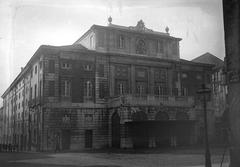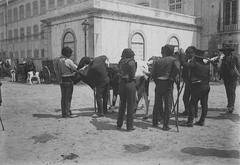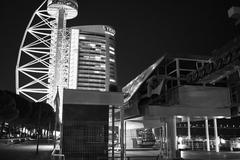Visiting Guide for Cais do Ginjal in Lisbon
Date: 31/07/2024
Introduction
Discover the hidden gem of Cais do Ginjal in Lisbon, Portugal. Situated on the southern bank of the Tagus River in the Almada district, Cais do Ginjal is a place where history, culture, and breathtaking views converge. With a rich history dating back to the early days of Lisbon’s development, this area has played a pivotal role in maritime activities, trade, and industrial growth. From its bustling port during the Age of Discoveries to its industrial zenith in the 19th century, Cais do Ginjal has been a cornerstone of Lisbon’s economic and cultural landscape (source). Despite experiencing a period of decline and abandonment in the mid-20th century, recent revitalization efforts have breathed new life into this area, making it a popular destination for tourists and locals alike (source). The juxtaposition of decaying industrial architecture with contemporary art installations creates a unique and captivating atmosphere that attracts photographers, artists, and history enthusiasts. This comprehensive guide will provide you with all the information you need to make the most of your visit to Cais do Ginjal, including historical insights, visitor information, dining recommendations, and travel tips.
Table of Contents
Historical Background
Early History and Development
Cais do Ginjal, located on the southern bank of the Tagus River in the Almada district, has a rich history that dates back to the early days of Lisbon’s development. The area was initially used as a strategic point for maritime activities due to its proximity to the river and the Atlantic Ocean. The Tagus River has always been a crucial artery for trade and transportation, making Cais do Ginjal an essential hub for the movement of goods and people.
The Age of Discoveries
During the Age of Discoveries in the 15th and 16th centuries, Portugal emerged as a leading maritime power. Lisbon, as the capital, became the epicenter of this global exploration. Cais do Ginjal played a significant role during this period, serving as a bustling port where ships were loaded with supplies for long voyages. The area was teeming with activity, from shipbuilders and merchants to sailors preparing for expeditions to uncharted territories.
Industrial Era
The 19th century marked the beginning of the Industrial Revolution in Portugal, and Cais do Ginjal was no exception to this transformative period. The area saw the establishment of various industries, including shipyards, warehouses, and factories. These developments further solidified its importance as a commercial and industrial hub. The remnants of these industrial structures can still be seen today, adding a layer of historical intrigue to the area.
Decline and Abandonment
The mid-20th century brought significant changes to Cais do Ginjal. With the advent of modern transportation and the decline of traditional maritime industries, the area began to lose its economic significance. Many of the factories and warehouses were abandoned, leading to a period of neglect. The once-thriving port became a shadow of its former self, with derelict buildings and overgrown pathways.
Recent Revitalization Efforts
In recent years, there has been a renewed interest in revitalizing Cais do Ginjal. Efforts have been made to preserve its historical structures while also promoting tourism and cultural activities. The area is now a popular destination for visitors looking to explore Lisbon’s industrial past and enjoy the scenic views of the Tagus River. Several restaurants and cafes have opened along the waterfront, offering a blend of historical charm and modern amenities.
Architectural Significance
The architectural landscape of Cais do Ginjal is a testament to its varied history. The area features a mix of industrial ruins, traditional Portuguese buildings, and modern structures. One of the most notable landmarks is the old warehouse complex, which has been partially restored and now houses cultural events and exhibitions. The juxtaposition of decaying industrial architecture with contemporary art installations creates a unique and captivating atmosphere.
Cultural Impact
Cais do Ginjal has also made its mark on Portuguese culture. The area has been featured in various literary works, films, and music, often depicted as a symbol of Lisbon’s maritime heritage and industrial decline. Its picturesque setting and historical significance make it a popular subject for artists and photographers. The cultural events held in the area, such as art exhibitions and music festivals, further contribute to its vibrant cultural scene.
Visitor Information
- Visiting Hours: Cais do Ginjal is open to visitors year-round. Specific attractions may have varying hours, so check ahead.
- Tickets: Entry to the area is free, but certain tours or exhibitions may require tickets.
- Accessibility: The area is accessible by ferry from Cais do Sodré in Lisbon. The ferry ride offers stunning views of the Lisbon skyline and the Tagus River.
- Walking Tours: Consider joining a guided walking tour to learn more about the history and significance of Cais do Ginjal. These tours often include visits to the old warehouses and other historical sites.
- Dining: There are several waterfront restaurants and cafes where you can enjoy traditional Portuguese cuisine while taking in the scenic views. Some popular options include Ponto Final and Atira-te ao Rio.
- Photography: The area is a photographer’s paradise, with its mix of industrial ruins, river views, and vibrant street art. Be sure to bring your camera to capture the unique atmosphere.
- Safety: While Cais do Ginjal is generally safe, some areas can be a bit isolated, especially at night. It’s advisable to visit during the day and stay in well-populated areas.
FAQ
- What are the best visiting hours for Cais do Ginjal? Cais do Ginjal is open to visitors year-round, but it’s best to visit during the day for safety and to fully enjoy the views and attractions.
- Are there guided tours available? Yes, guided walking tours are available and are highly recommended to learn about the history and significance of the area.
- Is there an entry fee for Cais do Ginjal? Entry to the area is free, though specific tours and exhibitions may have ticket prices.
Conclusion
In summary, Cais do Ginjal is a fascinating destination that offers a glimpse into Lisbon’s rich maritime and industrial history. Its blend of historical significance, architectural beauty, and cultural vibrancy makes it a must-visit location for anyone exploring the Portuguese capital. By following the tips and recommendations provided in this guide, visitors can ensure a memorable and enjoyable experience at Cais do Ginjal.
Don’t forget to download our mobile app Audiala for more travel tips and updates on Lisbon’s historical sites. Follow us on social media for the latest news and recommendations.

